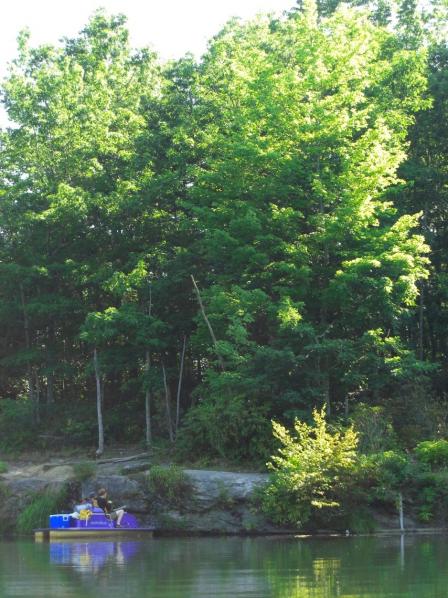Indicators: Lakeshore Habitat/Riparian Vegetative Cover
What is lakeshore habitat/riparian lakeshore vegetative cover?
Riparian and lakeshore vegetative cover consist of the vegetation corridor alongside streams, rivers and lakes. Vegetative cover refers to overhanging or submerged tree limbs, shrubs and other plants growing along the shore of the waterbody.

Why is it important to evaluate lakeshore habitat/riparian vegetative cover?
Rivers, streams and lakes can be buffered from the effects of human disturbance in the watershed by varied, multi-layered vegetation in the land corridor that surrounds them. Healthy, intact vegetative cover in these riparian areas can help reduce nutrient and sediment runoff from the surrounding landscape, prevent bank erosion and provide shade to reduce water temperature. Vegetative cover can also provide leaf litter and large wood (such as branches and logs) to serve as food, shelter and habitat for aquatic organisms.
What can lakeshore habitat/riparian vegetative cover tell us about the condition of water?
The presence of large, mature canopy trees in the riparian corridor indicates riparian longevity. The presence of smaller, woody vegetation typically indicates that riparian vegetation is reproducing and suggests the potential for future sustainability of the riparian corridor. Riparian and lakeshore vegetative cover conditions vary naturally among the different ecological regions of the U.S. The amount and complexity of vegetative cover for a given stream, river or lake is used as a measure of the integrity of the waterbody’s physical habitat.
